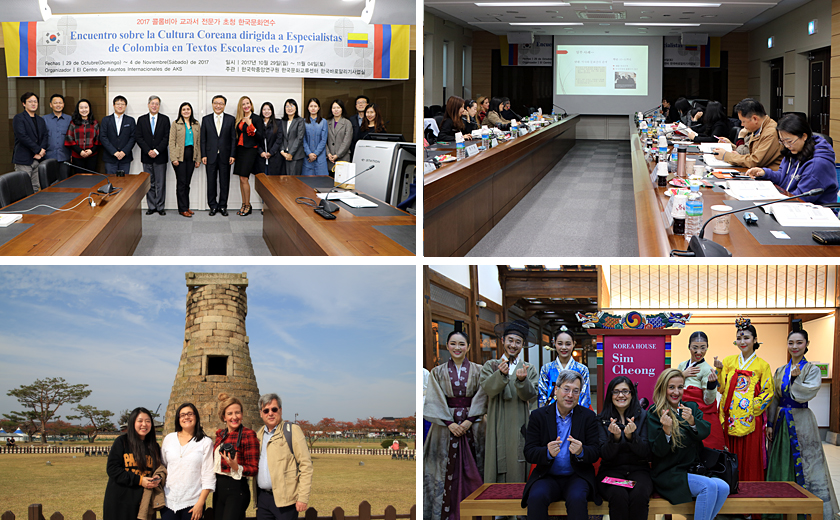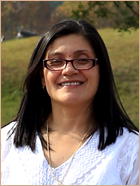Column
2017 Fellowship for Textbook Specialists of Colombia
What I learn in Korea
The colors of autumn, the smell of ginkgo biloba, the taste of kimchi, the precision of the bullet train, the millenary history of Gyeongju, the mystery of the Gwangmyeong mine, the antiquity of the village of Yangdong, the religiosity of Bulguksa Temple, the grandeur of Gyeongbokgung Palace, the creativity of the Sim Cheong Theater and the cosmopolitan atmosphere of Seoul are some of the many sensations and places that I will never forget after my visit to South Korea at the beginning of November 2017.
After this experience, South Korea will no longer seem like a small, remote country located on an Asian peninsula that is barely visible on the world map. South Korea is and will remain an entrepreneurial country, thriving and rich in tradition and history, from which it is possible to learn countless things.
In South Korea, you learn that history is a primordial issue of the present. In this regard, South Korea has the Academy of Korean Studies (AKS), an institution committed to the dissemination of correct and accurate information about Korean history and culture. Through this commitment, Korea has opened its doors to all those who are interested in disseminating accurate information about the country to invite visitors to come and learn about the country’s past firsthand. This past hides hidden innermost details, as observed in the exhibition on love stories in traditional Korea. The different stories unearthed from ancient archives reveal a sentiment that ennobles the loving relationships of those who belonged to the Joseon dynasty. The systematization and organization of these stories constitute a wonderful example of historiographic construction with which it can be understood that for history the daily affairs of people who did not take part in major events, but whose life stories nevertheless made an essential contribution to the tradition of their nation.
In South Korea, you learn that it is an honor to rescue the past to show it to current generations. The Korean state has been interested in recovering and rebuilding numerous places that are now recognized by UNESCO as World Heritage Sites, including palace complexes, sanctuaries, fortresses, villages, and caves. For example, when walking on the paths of the Daeneungwon Tomb, you will discover that for the Silla dynasty death was not a transitory issue. Each tomb had its purpose; not only to conserve the relics of a prominent figure but also to immortalize passage into the afterlife in order to have a permanent memory of it. It may be a trend, but this memory is also rescued by the young Koreans who wear traditional clothes, which they proudly show off in different public places.
In South Korea, you learn that an educational system can be designed to seek the happiness of its children and young people. For the Ministry of Education of South Korea, reflecting on its educational context is a constant task, and it does not matter if it is necessary to redesign a new plan and start from scratch. The current curriculum in social sciences requires students to demonstrate what they learn in real situations, to emphasize the tasks for which knowledge is applied, and to link the school with the real world. This partly explains the fact that happiness is one of its key concepts and that it is closely related to the quality of life, economic stability, the development of democracy, and moral fulfillment. Only a government that thinks about its population's welfare can set for happiness so that those who are currently experiencing their academic training will be willing to build their life projects and simultaneously contribute to the improvement and development of their country.
However, in South Korea, you also learn that spreading the truth is an academic purpose. Therefore, it will also be an ethical commitment for the Colombian publishers to reconstruct the lessons and contents discovered in South Korea to ensure their correct publication and dissemination.
We would like to express special thanks to the Academy of Korean Studies for allowing us to approach the history and culture of South Korea. The goals developed by the Korean government through this institution are admirable.
After this experience, South Korea will no longer seem like a small, remote country located on an Asian peninsula that is barely visible on the world map. South Korea is and will remain an entrepreneurial country, thriving and rich in tradition and history, from which it is possible to learn countless things.
In South Korea, you learn that history is a primordial issue of the present. In this regard, South Korea has the Academy of Korean Studies (AKS), an institution committed to the dissemination of correct and accurate information about Korean history and culture. Through this commitment, Korea has opened its doors to all those who are interested in disseminating accurate information about the country to invite visitors to come and learn about the country’s past firsthand. This past hides hidden innermost details, as observed in the exhibition on love stories in traditional Korea. The different stories unearthed from ancient archives reveal a sentiment that ennobles the loving relationships of those who belonged to the Joseon dynasty. The systematization and organization of these stories constitute a wonderful example of historiographic construction with which it can be understood that for history the daily affairs of people who did not take part in major events, but whose life stories nevertheless made an essential contribution to the tradition of their nation.
In South Korea, you learn that it is an honor to rescue the past to show it to current generations. The Korean state has been interested in recovering and rebuilding numerous places that are now recognized by UNESCO as World Heritage Sites, including palace complexes, sanctuaries, fortresses, villages, and caves. For example, when walking on the paths of the Daeneungwon Tomb, you will discover that for the Silla dynasty death was not a transitory issue. Each tomb had its purpose; not only to conserve the relics of a prominent figure but also to immortalize passage into the afterlife in order to have a permanent memory of it. It may be a trend, but this memory is also rescued by the young Koreans who wear traditional clothes, which they proudly show off in different public places.
In South Korea, you learn that an educational system can be designed to seek the happiness of its children and young people. For the Ministry of Education of South Korea, reflecting on its educational context is a constant task, and it does not matter if it is necessary to redesign a new plan and start from scratch. The current curriculum in social sciences requires students to demonstrate what they learn in real situations, to emphasize the tasks for which knowledge is applied, and to link the school with the real world. This partly explains the fact that happiness is one of its key concepts and that it is closely related to the quality of life, economic stability, the development of democracy, and moral fulfillment. Only a government that thinks about its population's welfare can set for happiness so that those who are currently experiencing their academic training will be willing to build their life projects and simultaneously contribute to the improvement and development of their country.
However, in South Korea, you also learn that spreading the truth is an academic purpose. Therefore, it will also be an ethical commitment for the Colombian publishers to reconstruct the lessons and contents discovered in South Korea to ensure their correct publication and dissemination.
We would like to express special thanks to the Academy of Korean Studies for allowing us to approach the history and culture of South Korea. The goals developed by the Korean government through this institution are admirable.



